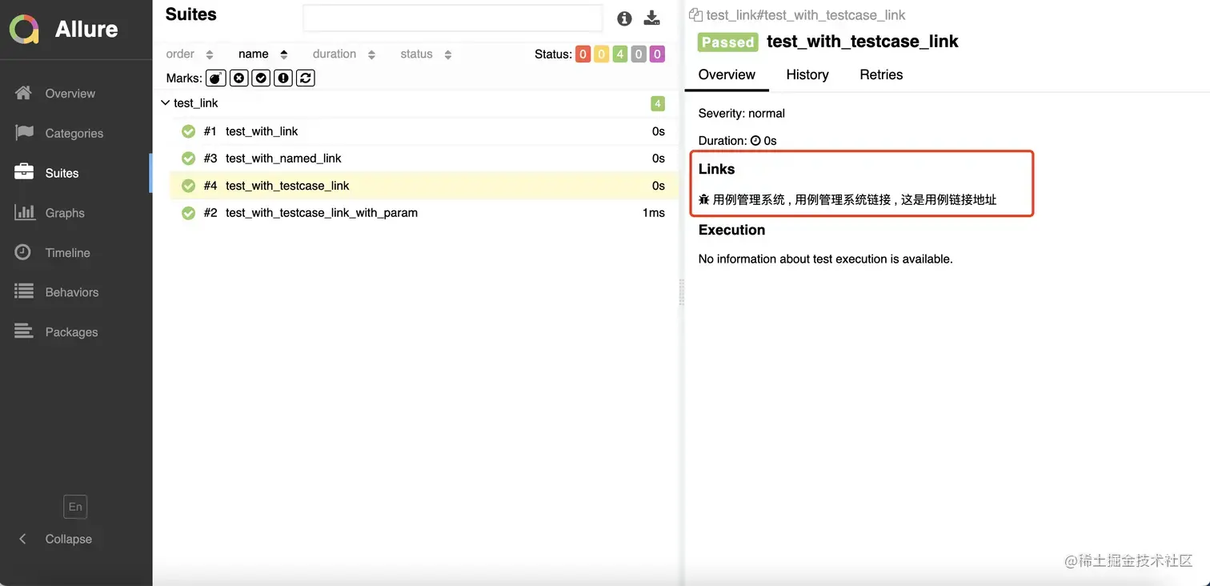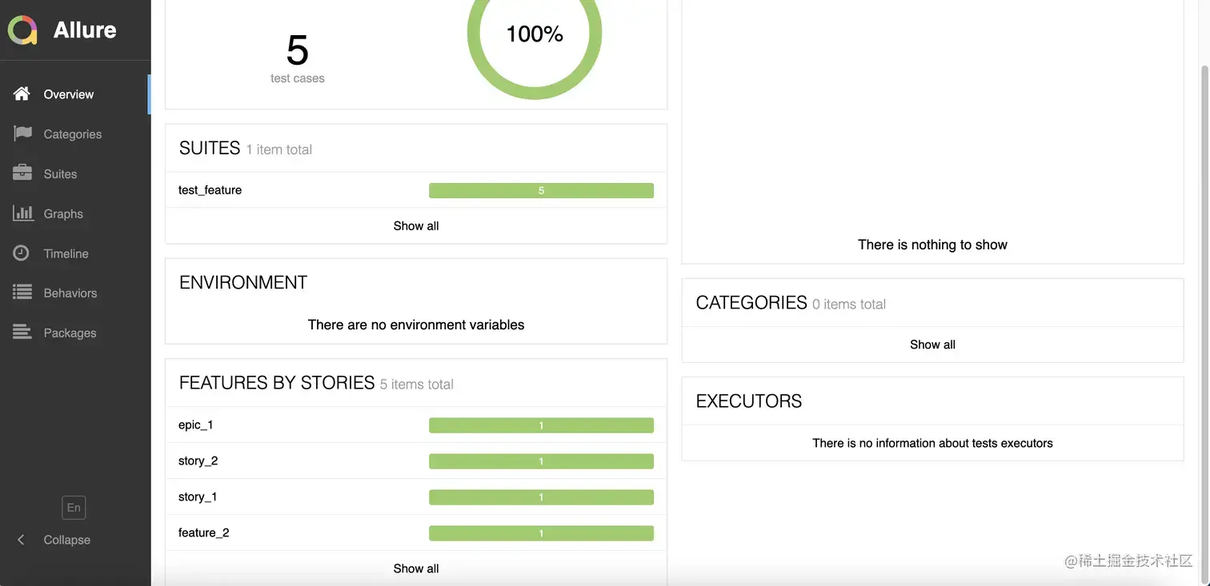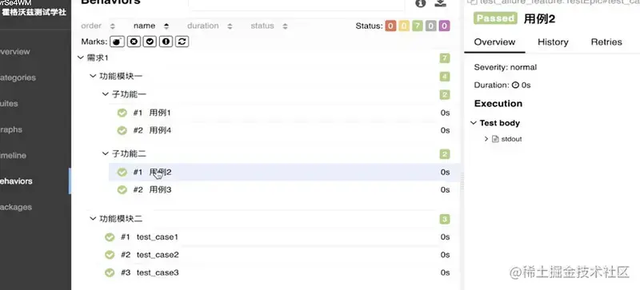软件测试丨学习笔记 Allure2 报告中添加用例链接、用例分类
获取更多相关知识
本文为霍格沃兹测试开发学社学员学习笔记分享,文末附原文链接。
1、Allure2 报告中添加用例链接
Allure2 用例链接
应用场景:将报告与 bug 管理系统或测试用例管理系统集成,可以添加链接装饰器 @allure.link、@allure.issue 和 @allure.testcase。

Allure2 用例链接
格式 1:@allure.link(url, name) 添加一个普通的 link 链接。
格式 2:@allure.testcase(url, name) 添加一个用例管理系统链接。
格式 3:@allure.issue(url, name),添加 bug 管理系统链接。

2、Allure2 报告中添加用例分类
Allure 分类
应用场景:可以为项目,以及项目下的不同模块对用例进行分类管理。也可以运行某个类别下的用例。
报告展示:类别会展示在测试报告的 Behaviors 栏目下。
Allure 提供了三个装饰器:@allure.epic:敏捷里面的概念,定义史诗,往下是 feature。@allure.feature:功能点的描述,理解成模块往下是 story。@allure.story:故事 story 是 feature 的子集。

Allure 分类 - epic
场景:希望在测试报告中看到用例所在的项目,需要用到 epic,相当于定义一个项目的需求,由于粒度比较大,在 epic 下面还要定义略小粒度的用户故事。
解决:@allure.epic
Allure 分类 - feature/story
场景: 希望在报告中看到测试功能,子功能或场景。
解决: @allure.Feature、@allure.story
步骤:功能上加 @allure.feature('功能名称')子功能上加 @allure.story('子功能名称')

Allure 运行 feature/story
allure 相关的命令查看 : pytest --help|grep allure
通过指定命令行参数,运行 epic/feature/story 相关的用例:pytest 文件名 --allure-epics=EPICS_SET --allure-features=FEATURES_SET --allure-stories=STORIES_SET

Allure epic/feature/story 的关系
epic:敏捷里面的概念,用来定义史诗(需求,项目),相当于定义一个项目。
feature:相当于一个功能模块,相当于 testsuite,可以管理很多个子分支 story。
story:相当于对应这个功能或者模块下的不同场景,分支功能。
epic 与 feature、feature 与 story 类似于父子关系。
版权声明: 本文为 InfoQ 作者【测试人】的原创文章。
原文链接:【http://xie.infoq.cn/article/1e215e5a951ebc35eac81388f】。文章转载请联系作者。











评论